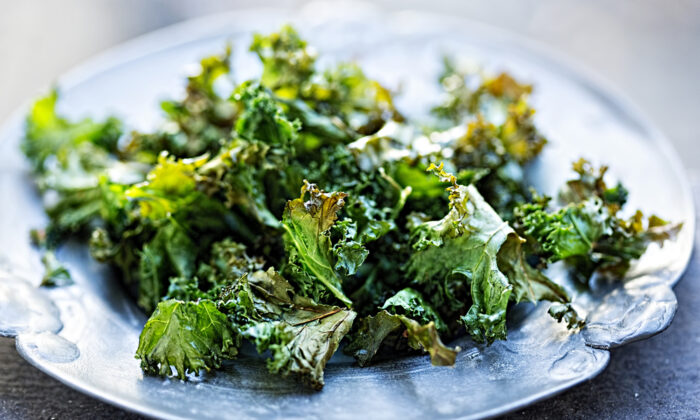On Jan. 1, 2013, countless Americans flocked to Google. With the aftertaste of New Year’s Eve dips and desserts still in their mouths, they ambled to their computers with new resolutions. A four-letter word flashed from their fingers to keyboard to Google’s search algorithm: kale. That January marked the high-water mark of the leafy green vegetable’s health food wonder status. A year later, “kale” searches were down and have sunk ever since. The vegetable didn’t change. What did?
“I think different superfoods trend,” said Chicago dietician Kirby Walter. “That doesn’t mean that they’re any less nutrient-dense or not good for you anymore. People just jump on bandwagons.”
It took kale four years to reach its crest in foodie prominence. In its heyday, articles sprouted across the media touting its benefits. You could put kale in salads, soups, and enchiladas. The more daring put kale in smoothies or brownies. Kale’s popularity by Google search jumped every January from 2010 to 2014. January 2013 almost doubled Kale’s search numbers. January 2014 almost doubled them again. For the rest of the year, it rose gently and steadily upward. But after 2013, ‘kale’ searches declined in almost every month without a New Year. Only the New Year’s Resolution spike kept kale’s search popularity from plummeting. In December 2021, kale reached its lowest search popularity since November 2011.
Kale remained nutritious, iron-rich, and filled with fiber. Its flavor stayed the same, too—the kind of bitter that God couldn’t justify creating if it weren’t healthy. Many people remained its devotees. But perhaps people stopped searching for kale because it stayed the same.
The exposés flocked in like vegetarian vultures after kale stopped moving up in Google. From 2017 to 2019, the public discovered this celebrated vegetable had a darker green side. Kale sucked up toxic heavy metals from the soil. It joined the Environmental Working Group’s “Dirty Dozen” most pesticide-contaminated produce list. Kale might give you thyroid cancer.
The accusations weren’t as bad as they sounded. Strawberries lead the “Dirty Dozen” in pesticide contamination and few people care. Lettuce also leaches up heavy metals and can be found in salads from California to the Carolinas. To get thyroid cancer from kale, the victim must zealously eat pounds of it every day for months. Most people aren’t disciplined enough to eat healthy amounts of kale. Almost none are disciplined enough to eat unhealthy amounts of it.
Chicago dietician Stephanie Shigo said people want “miracle foods” like kale because they want to get healthy immediately. They’re desperate for a cure, as long as the cure doesn’t involve months of careful discipline and patience. Fellow dietician Walter said that dieticians today must reeducate people who want to lose weight in every way except the one that works; consistent exercise and healthy eating.
“There is no miracle food,” Shigo said. “I would not focus on one food to improve a client’s health, but I’d focus on the big picture.”
After its brief stint as a “miracle food,” kale settled into a new role as a normal food. Like bananas or Brussels sprouts or beans, people chowed down on it and didn’t chatter about it. It was healthy, and it tasted good if you cooked it right. The fad was over.
But kale sales haven’t died with the fad. In fact, they’re up.
“It’s still popular. It’s extremely popular, actually,” said Marliese McWherter, the creative marketing manager of Lakeside Organic Gardens, a produce company. “In the last couple years with this pandemic, there has been a shift for consumers to eat healthy. In fact, organic produce consumption has increased substantially.”
Kale may sell well, but the trendy new “miracle food” is spinach, said McWherter. If past trends hold, the new year will see a 20 percent rise in searches for it.


